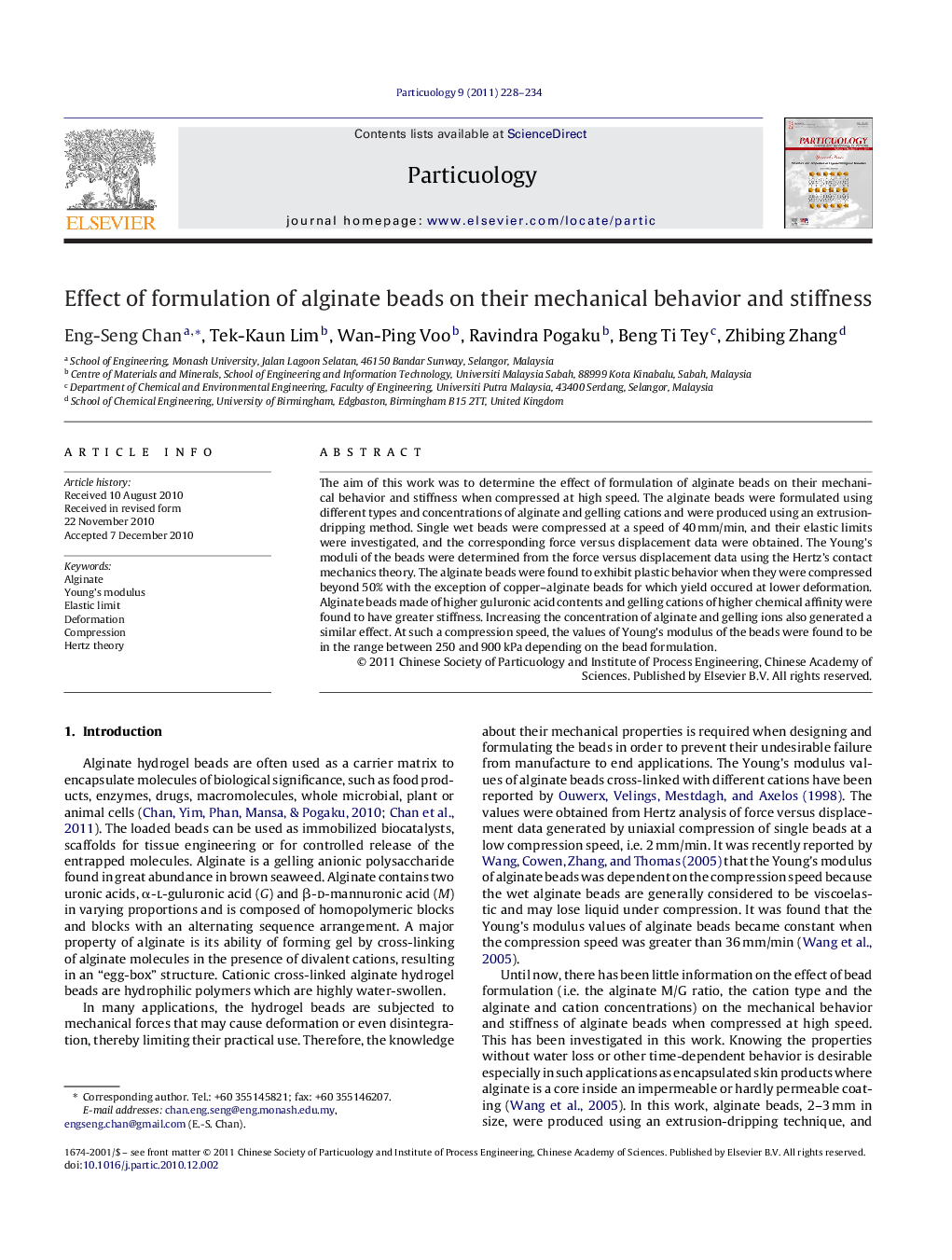| Article ID | Journal | Published Year | Pages | File Type |
|---|---|---|---|---|
| 672467 | Particuology | 2011 | 7 Pages |
The aim of this work was to determine the effect of formulation of alginate beads on their mechanical behavior and stiffness when compressed at high speed. The alginate beads were formulated using different types and concentrations of alginate and gelling cations and were produced using an extrusion-dripping method. Single wet beads were compressed at a speed of 40 mm/min, and their elastic limits were investigated, and the corresponding force versus displacement data were obtained. The Young's moduli of the beads were determined from the force versus displacement data using the Hertz's contact mechanics theory. The alginate beads were found to exhibit plastic behavior when they were compressed beyond 50% with the exception of copper–alginate beads for which yield occured at lower deformation. Alginate beads made of higher guluronic acid contents and gelling cations of higher chemical affinity were found to have greater stiffness. Increasing the concentration of alginate and gelling ions also generated a similar effect. At such a compression speed, the values of Young's modulus of the beads were found to be in the range between 250 and 900 kPa depending on the bead formulation.
Graphical abstractThe alginate beads were found to exhibit plastic behavior when they were compressed beyond 50%. Alginate beads made of higher guluronic acid contents and gelling cations of higher chemical affinity had greater stiffness. At a compression speed of 40 mm/min, the values of Young's modulus of the beads were in the range between 250 and 900 kPa depending on the bead formulation. Effect of alginate type and concentration on Young's modulus of Ca–alginate beads.Figure optionsDownload full-size imageDownload as PowerPoint slide
